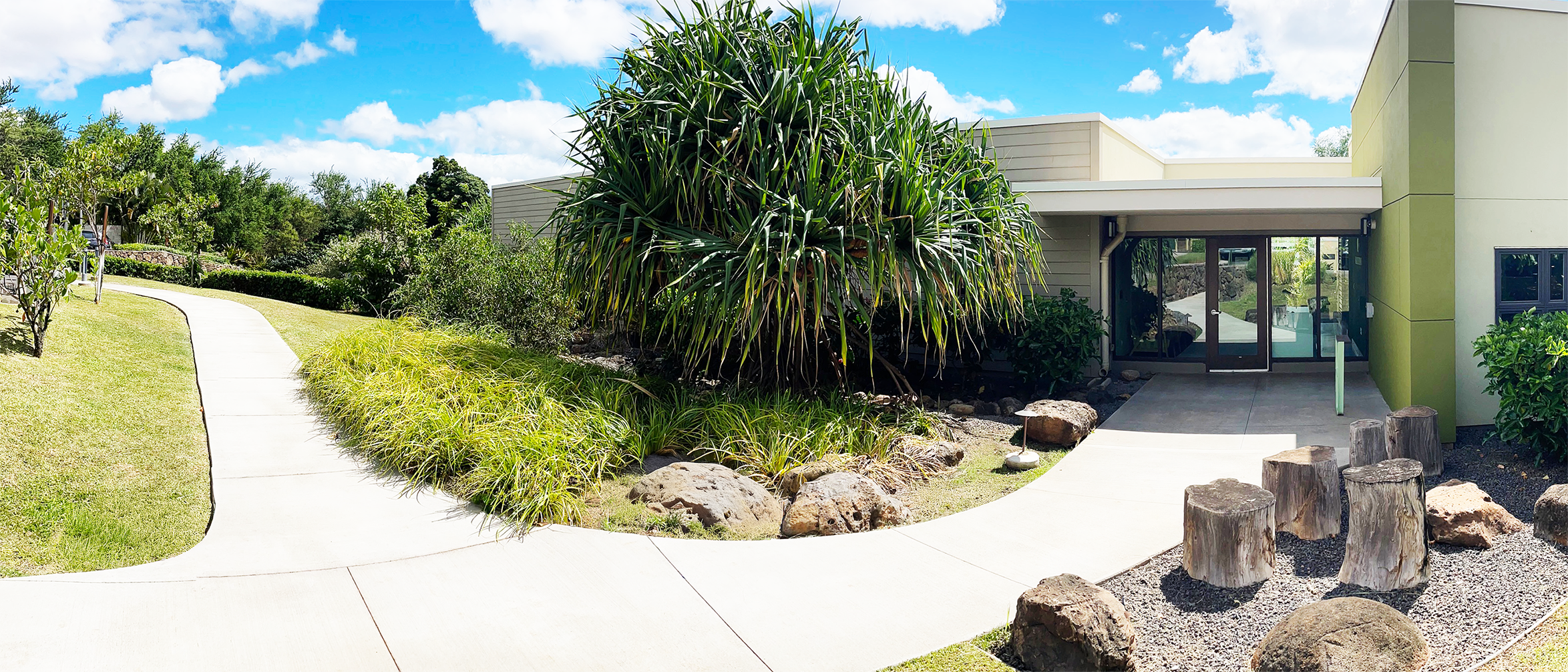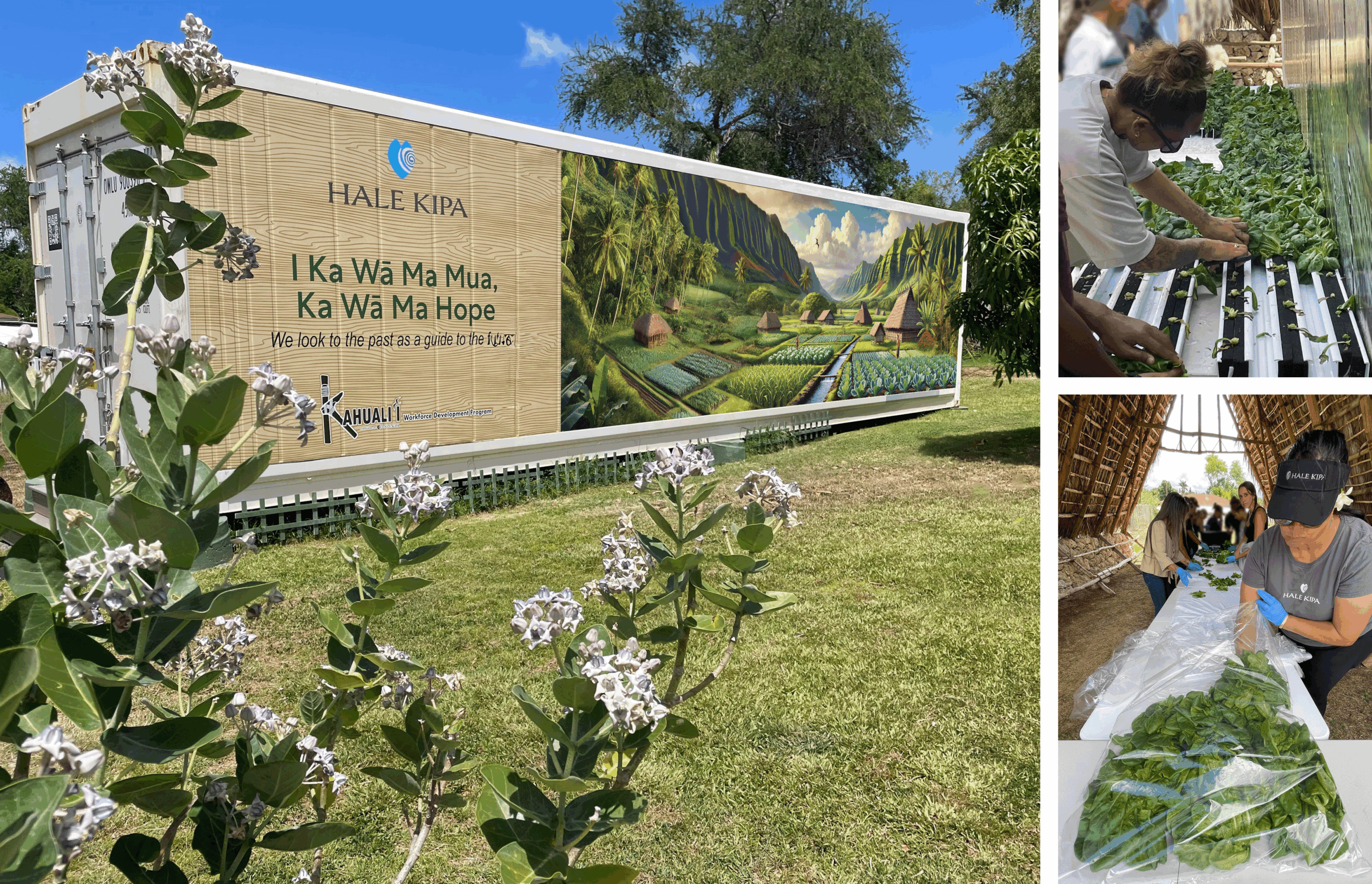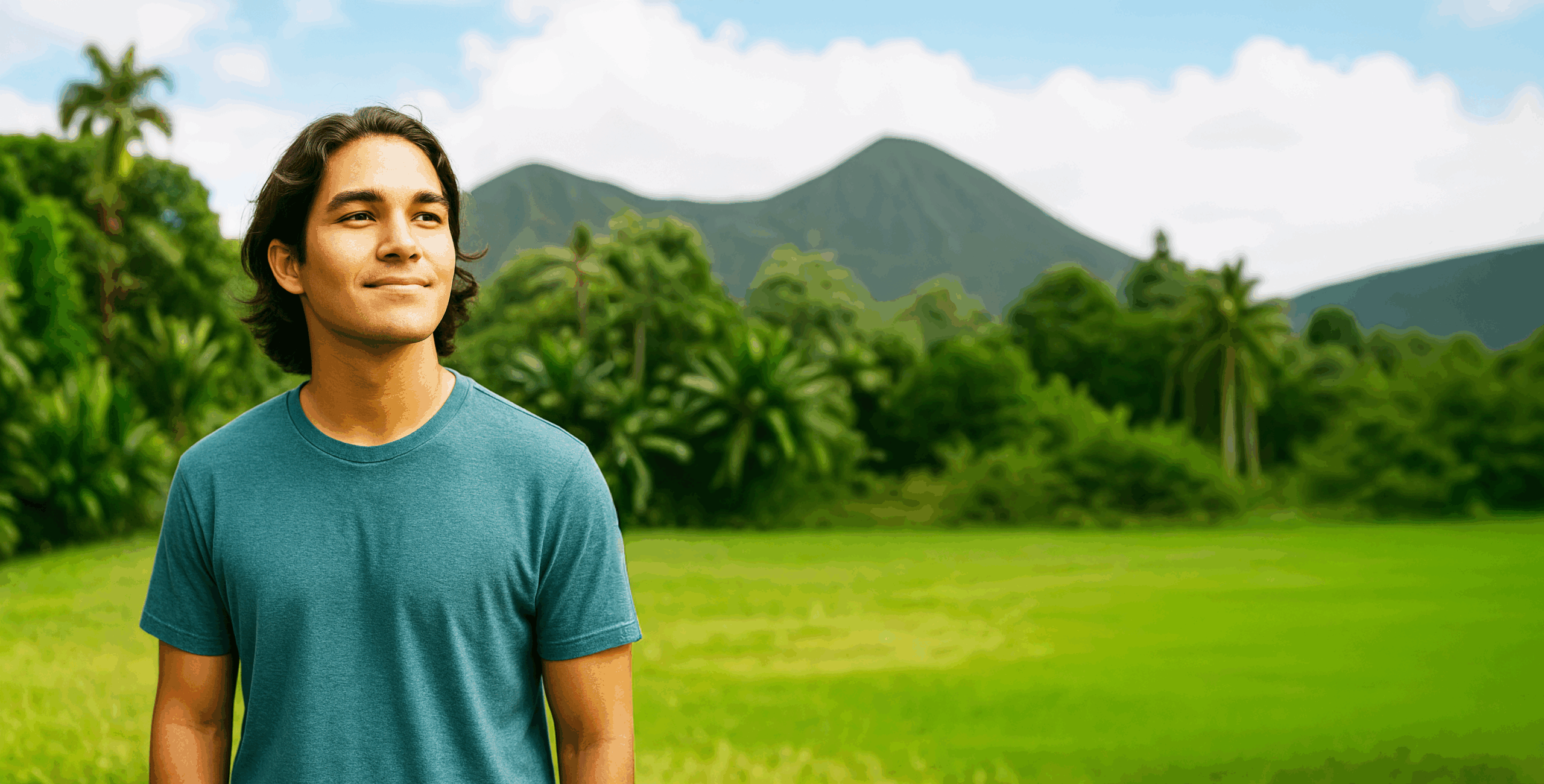2020 was a momentous year for Hale Kipa. We celebrated our 50th anniversary, refreshed our look, and moved into our long-awaited new headquarters in ʻEwa. We had only just unpacked our desks when COVID-19 sent the state into a lockdown. Nevertheless, our staff found ways to adapt so they could continue to serve Oʻahu’s at-risk youth and their families.
We asked our employees about their experiences and how the pandemic changed their approach to serving this vulnerable population.
Mandy Salis COVID-19 has prepared me to protect our youth through a pandemic. It also taught me how to better prepare myself and them if another pandemic occurs, though I hope it doesn’t.
Kona Askari For me, the pandemic has completely changed how I engage at-risk youth in the community. Many facilities have been locked down and no longer allow service providers to meet with youth, but fortunately Hale Kipa has adapted and allowed me to use music/trainings as a way of inspiring and helping others in the emergency shelters and fellow staff. I feel grateful and lucky to be allowed to partake in such an endeavor and to be supported by all the amazing staff at Hale Kipa.
Joe Maurer The stay-at-home order presented a challenge for us in that we were no longer able to meet face-to-face with youth. Interacting with youth in the community or at school and having those opportunities for connection is a key component to our work. We had to find a way to carry it out virtually and in a meaningful way. Staff got creative, whether that was setting up a tutoring session over video-chat or hosting virtual field trips. They were able to “see” youth, and more importantly, maintain a personal connection with them during an unprecedented time.
Kirsten Wong It has been incredibly challenging adjusting to this “new routine” given the technical impact of tele-mental health and a significant reduction to my income. My clients have canceled without notice and often have limited flexibility to reschedule. Youth seem overwhelmed by distance learning, leading to arguments with family. Parents appear overstressed as they struggle to maintain some semblance of structure, implement SPED-like accommodations for their multiple children, and coordinate separate academic and therapeutic zoom meetings. Generally, there is more distractedness during interactions.
Counseling has been beneficial for some, serving as a safe haven from difficulties in the home. Parental abuse has increased during the lockdown and decreased the youth’s sense of confidentiality with parents also being in the home. Youth ages 16 and older seem to have an easier time balancing the changes caused by the pandemic, but have also expressed reluctance to consider independent living goals due to the state of the community. Personally, I am struggling to maintain my productivity and patience for the innumerable technical issues with everyone surging the internet servers, connecting with my clients, and changes to my paycheck. I am incredibly grateful to have any income and hope that as this pandemic continues, we will find a sense of balance, grounding, and peace.
Akoni Kanaele Telehealth services have made it difficult for some families and clients to engage due to internet access and availability issues because of parents working and children with other family members. Staff are reporting increased prep time prior to sessions, a decrease in duration of sessions, increase in frequency, and some difficulty keeping younger children engaged. As a supervisor, it has changed the mode of supervision, but do I not have any evidence that it has impacted supervision in any way. Group supervision has been impacted in that we do not have an in-person connection. However, ZOOM group supervision has gone well overall and has provided opportunities for staff to connect. The virtual meetings eliminate travel time and that has helped with time management.
Regi Ching Initially, there were/are many in-services/trainings about new skills for doing teleMH, with some suggesting that you needed a whole new way of conducting therapy with clients. There were/are many great suggestions for how to engage a client, but the idea that my current skills were/are not sufficient initially hampered my connection with my clients. With affirmation of years of experience and facing my fears of trying something new, I embarked on exploring what makes teleMH successful. There was one training that stuck in my mind. It said that one’s level of comfort using teleMH is communicated through their video presentation. The realization that my level of comfort using teleMH and my willingness to be creative and think outside the box were the skills that I needed to explore, develop and maintain.
Now, when a client and I get stuck on how to do any activity, we problem solve together how to make it work. It takes more preparation, making sure the client has the tools (exercises, crayons, pencils, paper, cards, etc.) for us to work together, which are sent to client in an MH “care package.” Who doesn’t enjoy getting a “care package,” even it’s for therapy sessions?
Also, the medium of TeleMH allows clients to demonstrate their proficiency in the tech world. Allowing our youth to demonstrate their tech skills has sooooooo many benefits.
The short answer…. I encourage the client to structure sessions, thereby empowering them to have more impact on their MH.
Destine Fatu As a member of the relief staff, I have come to understand that the job is a job but also that the at-risk youth are in need of constant care. In taking precautions in order for me to come into work, I thought about how my presence would be an asset to the youth instead of how COVID-19 can affect me. The disease will come and go – it’s how we react to it to keep ourselves safe.
Keo Hirata As a provider working with at-risk youth within my island’s unique, rural community on Molokai, being creative and networking is something any and all service providers have to do in our daily interactions with at-risk youth and amongst ourselves. Therefore, I am used to thinking outside of the circle, but COVID-19 challenged me to reach beyond my circle. The first thing that came to my mind was what my previous supervisor, Lani Carrillo, always told me: “The importance of building a relationship and partnership on behalf of Hale Kipa, with your island’s service providers and agencies is one of your priorities. You will always need to work with them, for the youth. It’s not about us as service providers, it’s about the youth! If you always lead with that thought, the way you interact with your youth will have endless creativity.”
I had to rely heavily on the relationships I built with service providers to make sure my youth were still receiving service such as daily meals, therapy, etc. Phone calls, Zoom meetings and emails are the way we have to interact now. That removes the physical interaction of being able to talk with someone face to face, see their facial expressions and mannerisms, and be able to “feel” the energy of the person(s) you’re talking to, etc. That creates frustration because it is easy to get “lost in translation” when communicating virtually.
To better service my youth I had to find a way to, “Listen to Understand and Not Listen to respond” in a VIRTUAL way! I have to admit that communicating virtually is a daily challenge for me. Gosh, what is that? How do I do it? Communicating with my youth has changed from face-to-face to daily phone calls – no texts or emails. They need to hear our voices since they cannot see us. The way I talk to them on the phone has changed. I give them all the time they need to just talk and answer their questions in ways that they can understand. Giving examples or referencing a topic on a phone call is really difficult but not impossible. Making the phone calls at the right time of day is also important because they all function differently, and I want to be mindful of their needs. COVID-19 has “educated” me on a new form of communication.
Recently, we also asked our staff about how their field has changed over the years, and their recent successes. Staff also mused about mask wearing, the homeless population and even life on other galaxies.
What do you notice about your job/field today that is different from the past?
Regi Ching I remember growing up, it was considered a human character defect if one was struggling with MH issues. People were confined in psychiatric hospitals for non-MH issues, under some very abusive treatments. I was working in the field when the psychiatric centers released many people into communities. These communities were terrified that crime rates of violence and rape would escalate.
The concept of what a MH condition is has changed significantly. It appears there remains a stigma associated with MH treatment, however I think it has shifted.
Deborah Smith Homeless youth no longer have a semi-safe place to congregate on the streets (Waikiki and Kakaʻako) but instead have broken into smaller and smaller groups and therefore are harder to find for outreach. Many are receiving tickets for being in areas that are closed or for failing to wear a mask in public. It is rare now for youth to go to jail when they are arrested. Due to COVID at OCCC, most are released after arrest.
Have you experienced a recent highlight or success?
Deborah Smith I am still able to find housing for homeless youth. I am working with a female who is going to KUPU and found her first apartment last Friday. It will be her first time being housed.
What do you wonder about?
Keomailani Hirata I wonder why everyone sees life through a different lens?
Different races, different age groups, different cultures… we all look at life through different eyes.
I wonder if what we see in our individual lenses is because of our family values, morals and cultures that were instilled in us as children growing up?
I wonder if a child who has no family to instill values, morals and culture within them, sees the beautiful colors of life or if they see only black & white?
I’m just wondering through my wonder of my life’s lenses.
Regi Ching What are the other “people” like in the galaxies. We can’t be the only ones, right?
Deborah Smith I wonder when Oʻahu will start being nicer to homeless folks. On Kauaʻi, there are five dedicated parks, four of which are beach parks, for homeless camps. It would be nice if Oʻahu had a mayor who actually cared about homeless folks, too. Homeless folks here are traumatized over and over by a system that shuffles them around and refuses to provide safe shelter in a manner that is respectful.
Jaque Kelley-Uyeoka I wonder what it’s really like for my mo’puna to have to wear masks as part of their daily living while growing up. How does it shape how they perceive the world and how will it affect their development?





